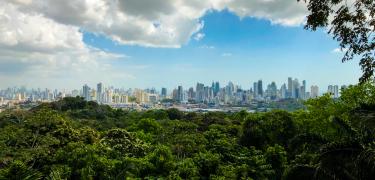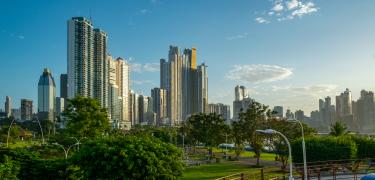Snorkeling & Diving in Panamá
Discover the magical and incredible Panamanian marine world while snorkeling and diving. Diverse marine wildlife and beautiful sights await you in the Caribbean Sea and the Pacific Ocean. You don’t have to choose between the coasts on your vacation. If you so wish, you can dive or snorkel off the Caribbean and Pacific on the same day; each offers unique experiences not found in the other. With warm temperatures that rarely fall below 24C/75.2F and often reach 30C/86F. Here are the top snorkeling and diving spots in Panamá.
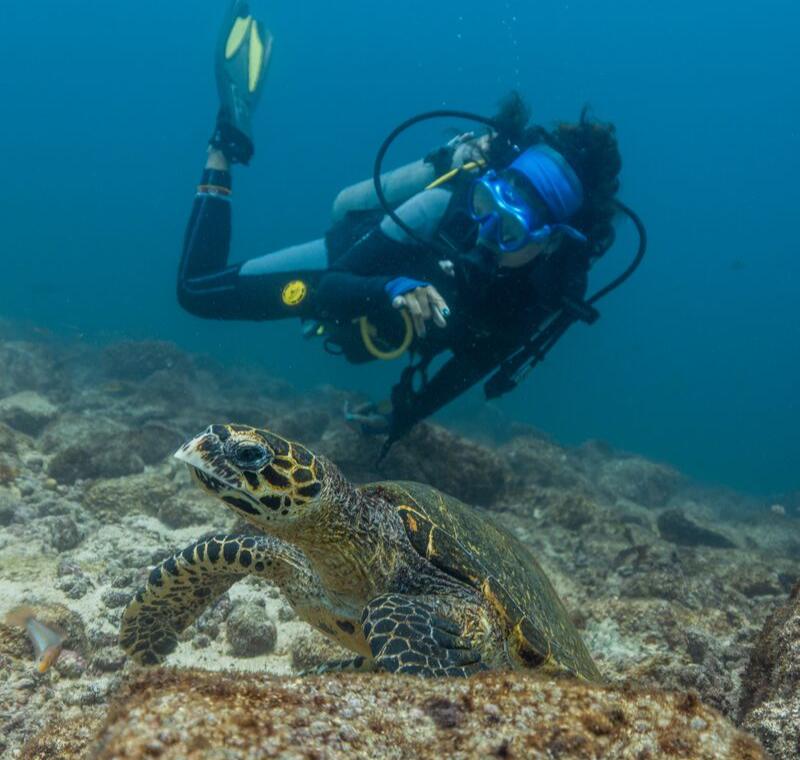
Panama’s Coiba Ridge is a chain of submarine mountains considered exceptional geological formations with high biodiversity, which is why the park is a UNESCO World Heritage Site.
The park resides on the same marine corridor as the Galapagos Islands, offering more than 40 authorized sustainable diving spots. The park is only accessible by boat. The quickest ride is a journey of an hour and 15 minutes from Santa Catalina in the Veraguas province. You’ll need a permit, which you can obtain with the assistance of tour operators offering diving and snorkeling tours.

Featuring crystal clear and warm waters inhabited by hawksbill turtles, white-tip reef sharks, and a myriad of brightly-hued fish, the protected park consists of 38 islands, including Coiba Island (Panama’s largest island) and the surrounding areas in the Gulf. Before its national park designation, it served as a penal colony. Access to the island was restricted, which allowed wildlife to flourish.
Some reefs around the park are over 5,000 years old, including the Bahia Damas Reef, making Coiba a world-class diving destination. The Bahia Damas Reef is the largest of its kind on the western coastline of the American continent and the second-largest in the Eastern Pacific. The waters are teeming with 760 species of fish, including the largest fish in the world, the whale shark that can measure up to 20m / 65ft, 33 species of sharks and rays, and over 20 species of marine mammals, like the humpback whale.
The fishing town of Boca Chica in the Chiriqui province is the starting point for your journey to the Gulf of Chiriqui Marine National Park, consisting of 25 islands, including Coiba, and 19 coral reefs.
Isla Secas is one of the islands and another prime diving spot with clear visibility and blissfully warm water at all times of the day. This private island and its true turquoise water is a part of an underwater volcanic mountain range, making this a true once-in-a-lifetime experience. While there, you may encounter manta rays, reef sharks, barracudas, and needlefish. And you can’t visit the Gulf without diving off the white sand beaches of Isla Parida.
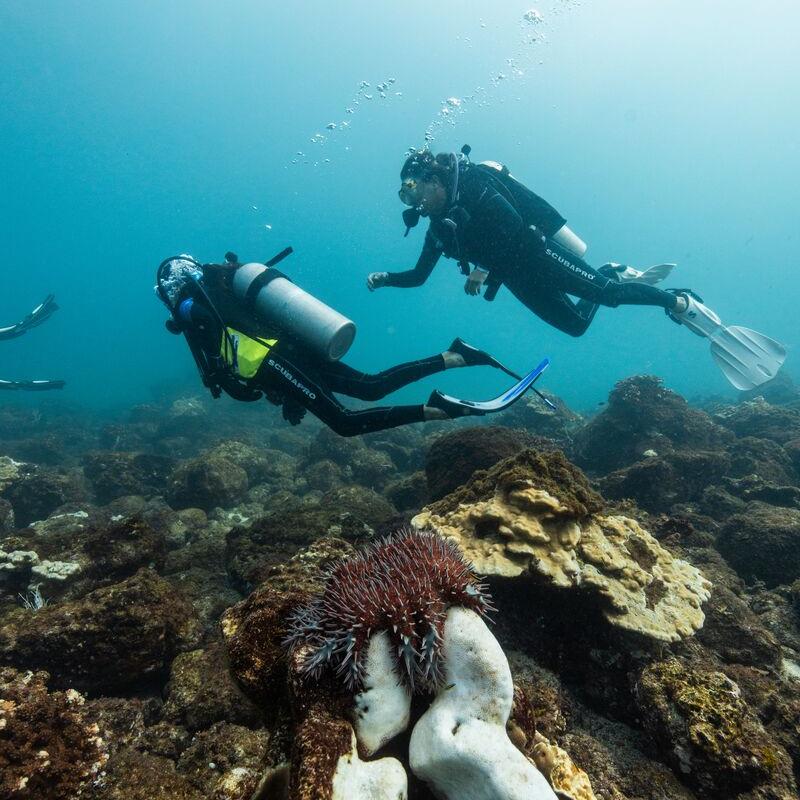
Dive into the waters of
Bocas del Toro
On the flip side of the Caribbean, the archipelago of Bocas del Toro offers diverse and easily accessible snorkeling and diving. The Caribbean side of Panama is home to a more tranquil diving experience perfect for beginners or those who want to slow down and fully immerse in the experience.
From corals and sponges to starfish and shipwrecks, it’s home to a plethora of marine species, such as southern rays, spotted eagle rays, lobsters, parrotfish, barracudas, squid, starfish, crabs, seahorses, and pufferfish. If luck is on your side, you may spot nurse sharks and manta rays. There are nine major islands including Isla Bastimentos, Isla Colon, and Isla Carenero, and thousands of islets and cays. Bocas del Toro boasts six different dive spots between Isla Colon and Bastimentos alone. These often have shallow waters with almost no currents, excellent for beginners.
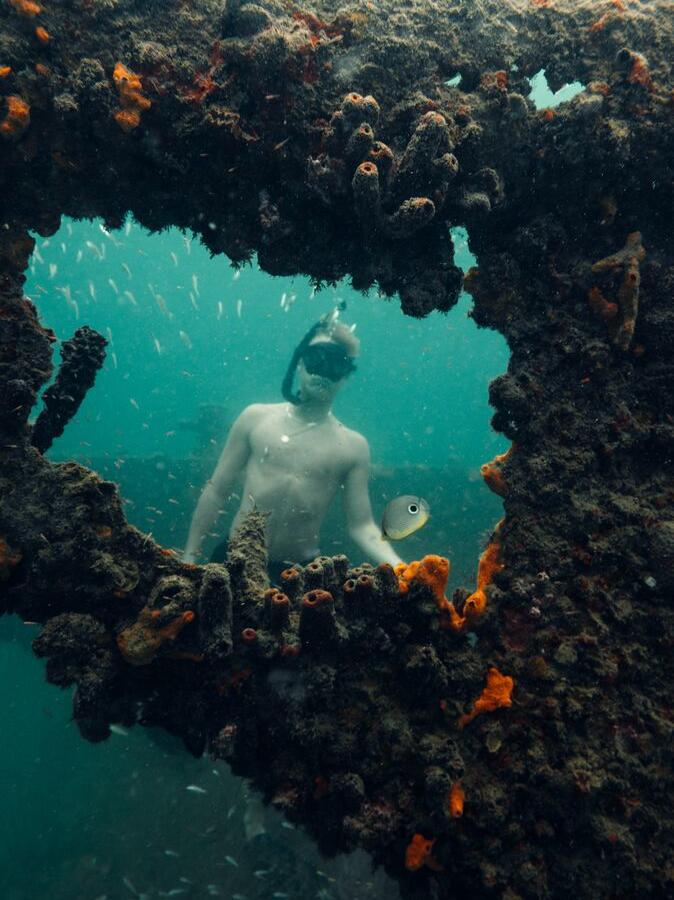
Bastimentos
Many of the reefs here are under the protection of the Isla Bastimentos Marine National Park, which you can reach by boat from Isla Colon, the main island.
One of the top diving sites at the park is Tiger Rock, accessible in the summertime when the water is calm. While diving, you may spot moray eels, schools of blacktip reef sharks, nurse sharks, and manta rays. Another can’t-miss spot in Isla Bastimentos is Coral Cay, as its lush, colorful coral gardens and friendly marine life make it one of the best places to snorkel.
If you want to feel like you’re on the set of an underwater adventure movie, visit Polo Beach, featuring an underwater labyrinth of rock passages and caverns.
Isla Colon
Intentionally sunk in 2000 to create an artificial reef for divers, The Old Wreck off Isla Colon lies above the reef, surrounding the island’s most southerly point. Beginner and expert divers can access the wreck. While diving, you may spot schools of snappers, sergeant majors, spotted drums, and mangrove jellies in and around the historical attraction.
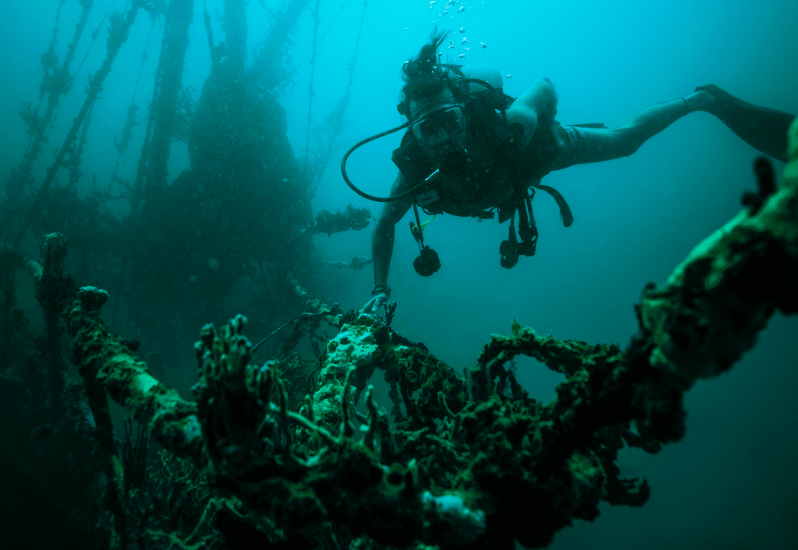
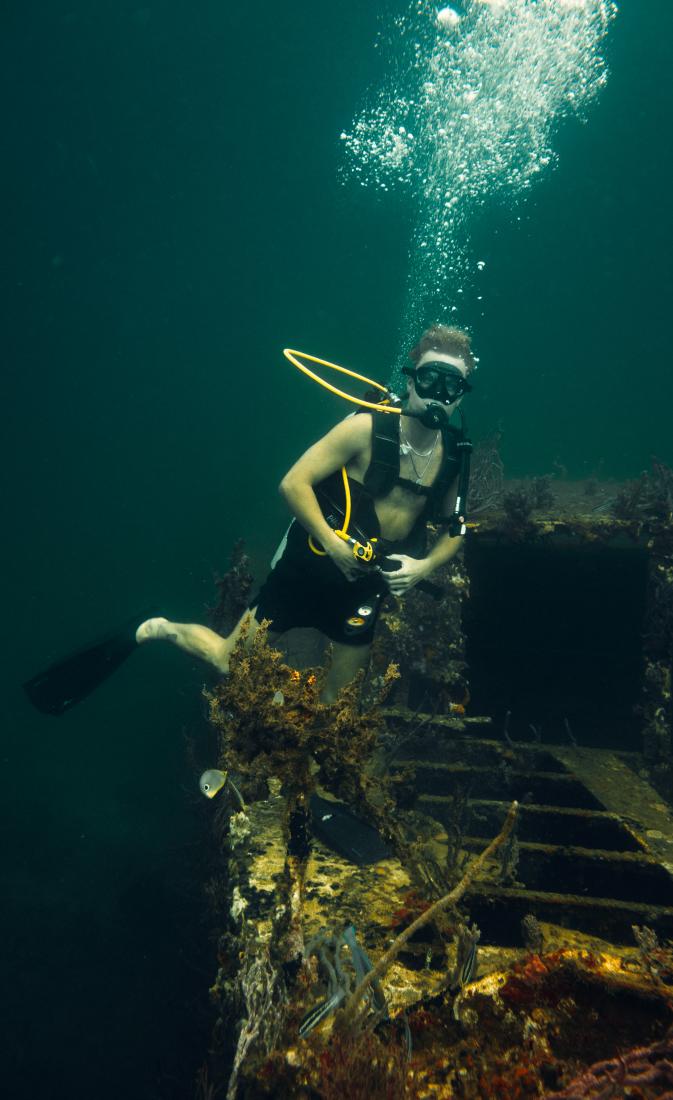
A short boat ride from the main island is Isla Solarte, which boasts not one, but three fantastic spots for snorkeling and diving. White House, Manuel’s Wall, and Hospital Point are just a quick three to five-minute boat ride from town and can be accessed year-round. White House features a shallow entry area that drops off into a deep-water channel reaching depths of up to 30m (100 feet). Inside this deep channel, divers will find Manuel’s Wall, which consists of two walls, the first, 14 meters tall (50ft), and the second, 22m (72 ft). The walls are populated by large gorgonian corals and sponges, as well as snapper, grouper, and reef fish. Keep an eye out for a Columbus-Era anchor still lodged in the second wall at about 20 m, thoroughly encrusted with marine life but still very identifiable.
Hospital Point was named after an old United Fruit Company hospital. The dive boasts a beautiful wall of coral starting at a few meters deep and reaching down to around 16 meters (52 ft). The walls’ small cracks and ledges are frequented by larger fish, and you can often see sharks swimming by the area looking for food.
One of Panama’s most popular diving sites is Drake Island due to its exotic marine life and even more engaging story. The island is named after Sir Francis Drake, a 16th-century sailor and navigator, who was buried at sea in 1596. His coffin is believed to be somewhere off the Panamanian coast near where ship remains were discovered in Portobelo Bay. Drake Island just so happens to have one of the most colorful reefs in the area with an abundant amount of sponges and colorful fish.
Another popular diving site, Buenaventura Island, is home to the wreck of a B-45 airplane in 21.3 m (70 ft) of water. This site has three dive sites to choose from: One Rock – a great place to find sand sharks – and for experienced divers – Salmedina and Tres Hermanas with deeper and with stronger currents.
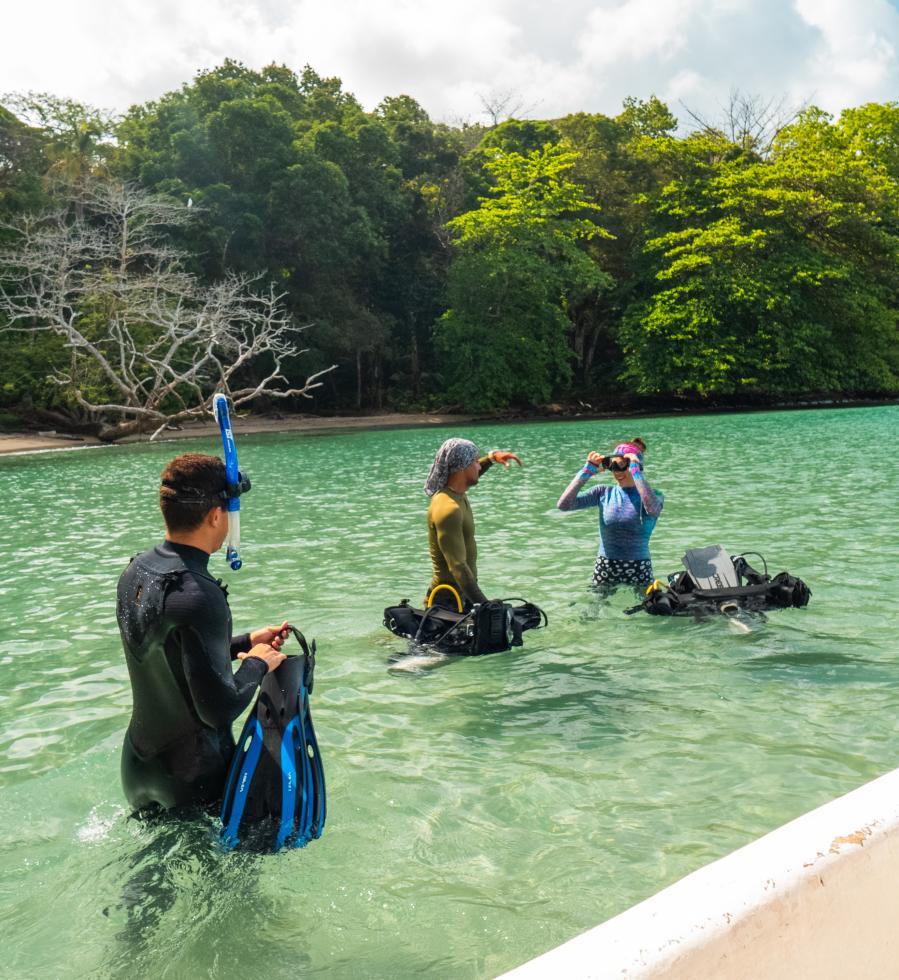
Marine Life in the
Pearl Islands
Located on the Pacific side of Panamá, in the Bay of Panamá, is the Pearl Islands archipelago, consisting of over 200 islands and islets. Most of the islands are uninhabited, so there are a lot of beaches, shore lines, and shallow waters perfect for scuba diving.
The archipelago gets its name from the Spanish Conquistadors, who found a lot of pearls there.
The opportunities for diving are diverse and many islands shield the waters from the ocean, which makes them better for a calmer dive. Any diving site that faces the ocean will have rougher waves; the currents from the ocean stir things up and make for great drift sites. Most days you can wade into the azure water, pop on a mask, and see schools of tropical fish and Manta rays swim by.
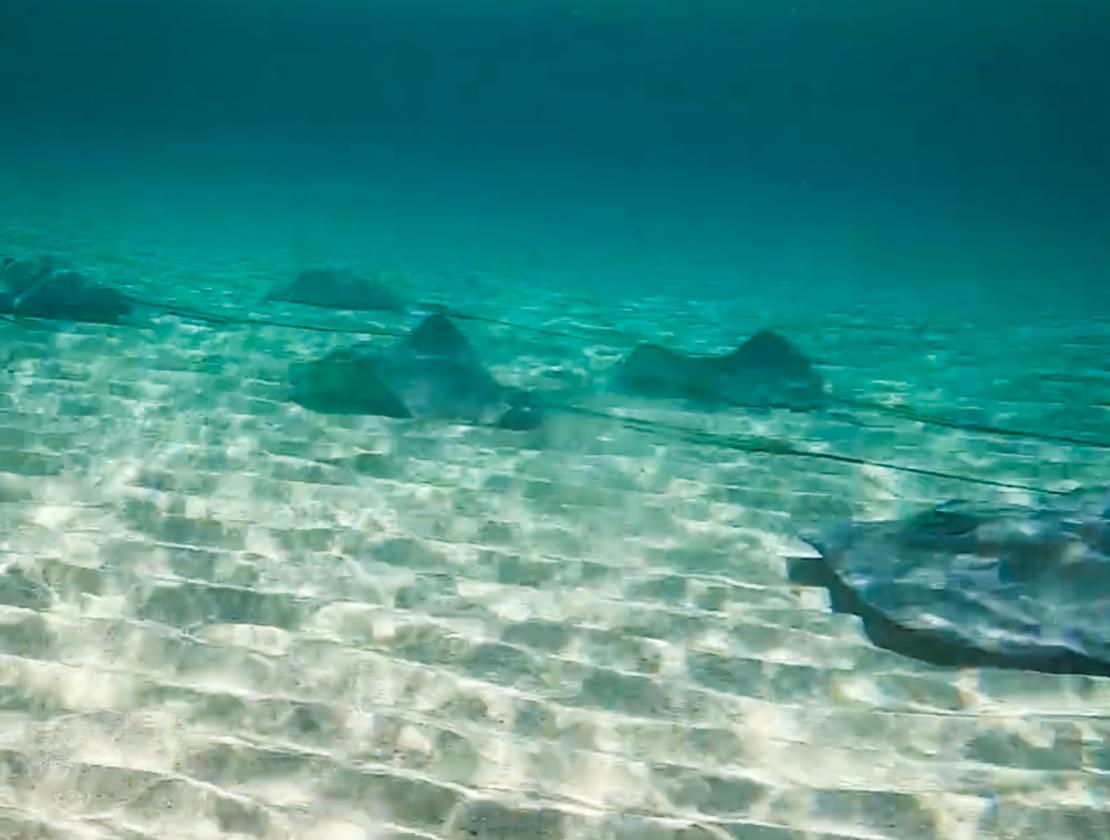
The Pachequilla Island is one of the top diving spots in the archipelago. There are volcanic rocks, warm water, and many types of fish. Its incredible caves and white-tip sharks draw divers from all skill levels to the island. Another popular diving spot in the Pearl Islands is Pacheca Island. Over at Isla Contadora, you can join a snorkeling tour or attend scuba diving classes.
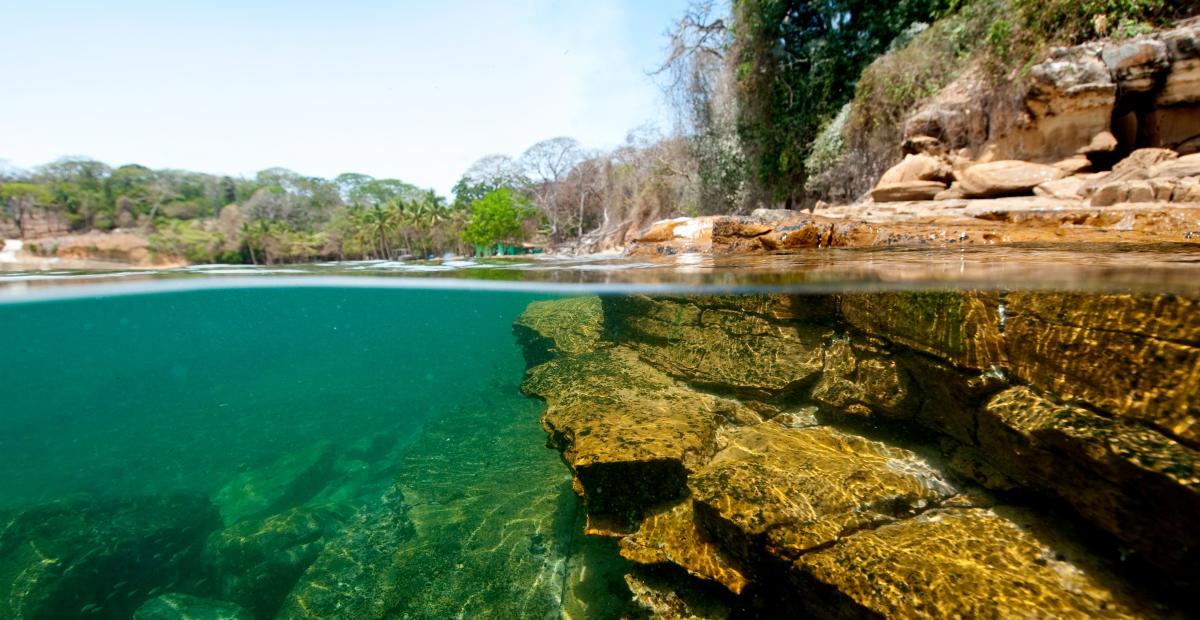
Whether you snorkel or dive, Panamá has a whole underwater world to explore!
Where to Dive in Panamá
Explore More Things to do
Cultural & Historic Sites
Panamá connects the world, and not only because it’s the bridge between North and...
Surfing
Panamá is a surfer’s haven. We welcome you to the stunning shores of our fishing...
Birdwatching
Panamá is home and a place of pilgrimage to more than 1,000 bird species. The tropical...
Turtle Sanctuaries
On the Sandy shores of Panamá, sea turtles live, grow, and thrive under our warm sun and safe...
Hiking
Rich in tropical flora, diverse wildlife, and picture-worthy sights, Panamá trails offer...
Fishing
With world record fishing, more than 2,900 km (1,800 miles) of coastline and the perfect...
Afro Heritage
Afro culture in Panamá is a vibrant and essential part of the country's cultural mosaic....
Indigenous Communities
Learn about tradition and nature through the eyes of Panamá’s 7 indigenous communities....
Beaches
Panamá is the isthmus connecting Central America and South America, and offers access to both...
Rural and Agrotourism
Agricultural tourism in Panamá is a unique adventure in the heart of nature. During this...

